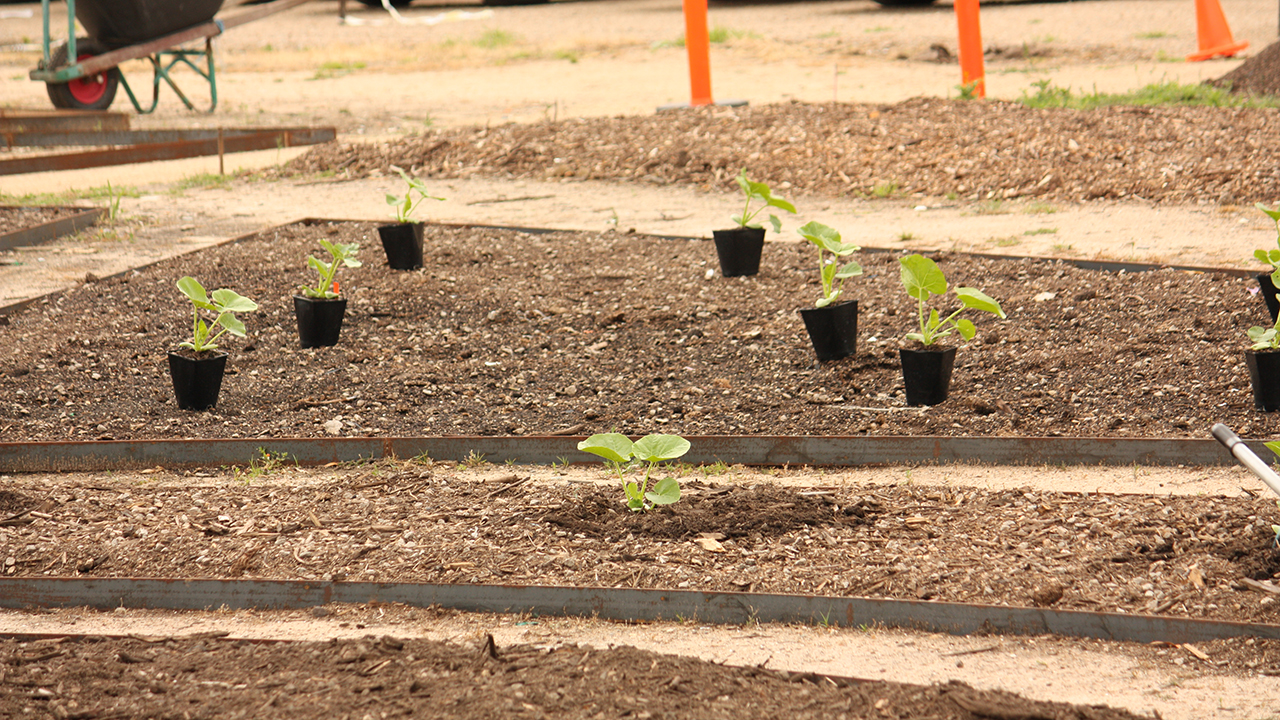Lesson 3 - Site assessment (space and layout)

It’s a good idea to have a method for evaluating your site before starting your food garden. Site assessment and analysis are essential to the planning and design process for growing plants so having a method to do this is beneficial.
The key thing is to start taking measurements, observing and taking notes about the main factors you think are important – both those that are visible and some that may not be. The available space that you have for growing food needs to be carefully considered, plus other factors of influence such as adjoining properties and structures, the presence of services and utilities, and any easements, by-laws or regulations relevant to the site. Getting some historical information on the site and its features from neighbours or others can also be very helpful. All this information can be put together in a brief sketch of the site, together with dimensions and notes on features and issues for consideration in planning and design of your food garden.
Diggers tip
Check the easement of your property by using one of the many online services available in Australia.
Understanding the physical site environment is crucial, particularly climate, aspect/orientation, light, topography/slope/drainage and soils. Get to know the local climate patterns where you live, particularly seasonal rainfall and temperature, but also possible extremes of cold, heat and wind. Climate change, of course, makes this a little more complex for all of us!
Just as important is the site microclimate, particularly factors such as light and shade, orientation and topography. In many urban sites, understanding how these factors intersect affects what plants can be successfully grown and what plants can’t. Issues like stored heat, shading, shadowing and wind exposure can be particularly difficult in some locations. While we will cover soils and water in a future lesson, it is important during site assessment to know the type of soil you have, including its structure and depth. Sometimes this includes digging a small hole to investigate any soil layers present and how well the soils drain when filled with water.
The existing plants on a site tell a story of the site, so knowing the types of plants present and how healthy they are can be useful to knowing the types of issues you may face when growing food plants there later. Perhaps of more importance is knowing the weeds present on a site, as these will require some treatment as part of the site preparation before planting.
Annual weeds are just that, herbaceous plants growing over a particular season or period of the year, and can often be easily controlled by cultivation (make sure to do this before these weeds set seed). Perennial weeds, such as some of the grasses and bulbous plants, are more difficult to control and are not always observable at the time of year in which you are assessing the site, i.e. summer dormant bulbs.
Making a note of what weeds are known and what weeds might be present helps determine the necessary site preparation.
It’s a good idea to consider how much time and effort you want to spend in your food garden, both during preparation and establishment and later during growing and harvesting. All gardens need work, but knowing your level of input can help you decide what types of plants you will grow and where best to grow them on site. Put simply, some food plants require more work to get them to harvest than others. If you have a keen interest in devoting time and effort to developing new knowledge and skills around growing food, then dream large in your planning and design. But if not, then start with small, easy-to-grow food plants and work your way forward from there.
Diggers tip
Think about access. How deep do you want your beds to be, taking into consideration how far you can lean. Consider where you want your paths and how close your water source is. Don't forget a place for your garden waste.